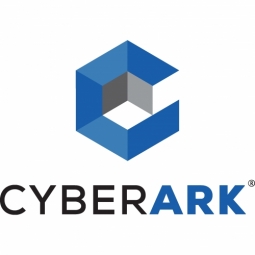Technology Category
- Cybersecurity & Privacy - Endpoint Security
- Cybersecurity & Privacy - Malware Protection
Applicable Industries
- Cement
- National Security & Defense
Applicable Functions
- Maintenance
- Quality Assurance
Use Cases
- Cybersecurity
- Tamper Detection
Services
- Cybersecurity Services
- System Integration
About The Customer
Tribunal Regional do Trabalho da 8ª Região (TRT8) is a judiciary body located in Northern Brazil. It is tasked with resolving employer and worker employment relationships in the states of Pará and Amapá. The organization is based in Belém, the capital of Pará state. TRT8 adjudicates on issues related to employment such as workers’ rights, disputes, and unions. The organization has 1,800 employees and is responsible for a significant amount of highly sensitive personal and legal information, particularly as it has recently digitized its court case management system.
The Challenge
Tribunal Regional do Trabalho da 8ª Região (TRT8), a judiciary body in Northern Brazil, was facing a surge in cyber attacks, a situation that was particularly concerning given the sensitive nature of the data they handle. The organization had recently digitized its court case management system, making all information related to court procedures, including highly sensitive personal information about individuals involved in employment disputes, digital. Despite having a robust security strategy, TRT8 had little control over users and passwords with access to this information, and privileged access was decentralized. Enforcing security information policies such as regularly changing and updating passwords was a manual and time-consuming process. Endpoint protection relied on a basic anti-virus tool, leaving the organization vulnerable to viruses or malicious attacks that could disseminate throughout the network and harm court operations.
The Solution
TRT8 turned to CyberArk to build a strong Identity Security infrastructure. Using CyberArk Endpoint Privilege Manager and CyberArk Privileged Access Manager (PAM) Self-Hosted, TRT8 was able to centralize and automate control over access to over 200 servers by centrally managing privileged accounts and rotating passwords. CyberArk integrates seamlessly with Microsoft Active Directory to automatically monitor users mapped to TRT8 multifactor authentication servers. CyberArk Endpoint Privilege Manager was deployed on all 2,500 endpoints, providing a solid endpoint security foundation. This Defense-In-Depth approach allowed TRT8 to enforce least privilege on the endpoints, actively defend credentials stored within the operating system and third-party applications, provide reliable protection from ransomware, and maintain visibility and control over the entire endpoint infrastructure. The solution was deployed using CyberArk Customer Success Manager and CyberArk Consulting Services, with support from IT Protect, CyberArk’s business partner.
Operational Impact
Quantitative Benefit

Case Study missing?
Start adding your own!
Register with your work email and create a new case study profile for your business.
Related Case Studies.

Case Study
System 800xA at Indian Cement Plants
Chettinad Cement recognized that further efficiencies could be achieved in its cement manufacturing process. It looked to investing in comprehensive operational and control technologies to manage and derive productivity and energy efficiency gains from the assets on Line 2, their second plant in India.

Case Study
Data Capture for Afghanistan Forces
Electronic equipments on the field of Afghanistan provided information on the status of the vehicle and to identify potential threats surrounding it to the British Force. The monitoring and interpretation of this data requires robust and sophisticated digitization for data capture and communication.

Case Study
Digital Transformation of Atlanta Grout & Tile: An IoT Case Study
Atlanta Grout & Tile, a Tile, Stone & Grout restoration company based in Woodstock, Georgia, was facing challenges with its traditional business model. Despite steady growth over the years, the company was falling behind the web revolution and missing out on the opportunity to tap into a new consumer base. They were using independent software from different vendors for each of their department information and workforce management. This resulted in a lot of manual work on excel and the need to export/import data between different systems. This not only increased overhead costs but also slowed down their response to clients. The company also had to prepare numerous reports manually and lacked access to customer trends for effective business decision-making.
Case Study
Enhancing Security and Compliance in Remitly's Global Money Transfer Service with Fastly
Remitly, an online remittance service, was faced with the challenge of securing its proprietary global transfer network. The company needed a security solution that could meet PCI requirements and protect customers' sensitive transactions through its mobile application. The solution had to be capable of defending against new and emerging attack types without impacting performance. Remitly also had to deal with irregular traffic patterns, such as a sudden spike in account transfers from a small network segment on the Pacific coastline of South America. The company needed to determine in real time whether such traffic indicated an attack or valid requests. A traditional web application firewall (WAF) would not be able to distinguish this traffic, potentially leading to customer frustration if the IP was blacklisted.

Case Study
Major Aerospace Company Automates Asset Management
The O&M division of an aerospace and global security company was using spreadsheets to manually track more than 3,000 assets assigned to students and staff. Maintaining audit trails for this high volume of equipment became increasingly time-consuming and challenging. The chore involved knowing precisely what equipment was on hand, what had been issued, its location and the name of the custodial owner of each item. Every aspect of this task was carried owner of each item. Every aspect of this task was carried out by individuals with spreadsheets. Manually documenting the full lifecycle of each asset added to the burden. This included tracking maintenance requirements and records, incidents and damages, repairs, calibrations, depreciation, and end-of-life data.








